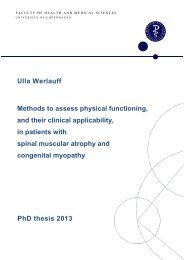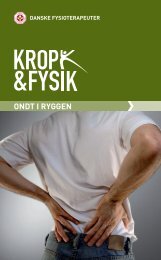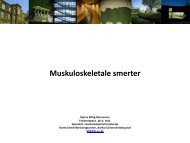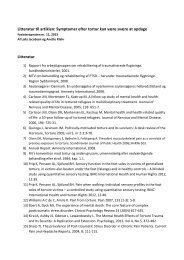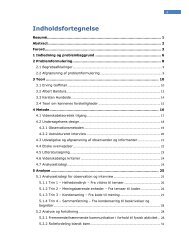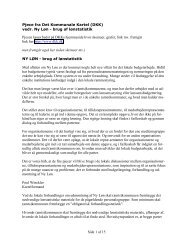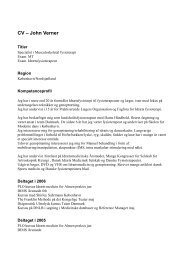Kristian Thorborg's Phd Thesis
Kristian Thorborg's Phd Thesis
Kristian Thorborg's Phd Thesis
You also want an ePaper? Increase the reach of your titles
YUMPU automatically turns print PDFs into web optimized ePapers that Google loves.
MMT evaluates muscle strength from 0-5, and defines the 6 levels as: 0 (Gone) no contraction felt,<br />
1 (Trace) muscle can be felt to tighten, but cannot produce movement, 2 (Poor) produces<br />
movement with gravity eliminated, but cannot function against gravity, 3 (Fair) can raise part<br />
against gravity, 4 (Good) can raise part against outside resistance as well as against gravity, 5<br />
(Normal) can overcome a greater amount of resistance than “good” muscle.[50] The advantage of<br />
MMT is that no equipment is needed, and the procedure is easy and quick to use. However, MMT<br />
has certain limitations when testing patients stronger than 3.[51] Most physically active patients,<br />
with no severe disability, score 5 in MMT, despite having muscular deficits. Hence a clear ceiling<br />
effect is present when testing these patients. A recent study have showed that the measurement<br />
error of MMT between testers is 1, indicating that it is very difficult for different testers to<br />
distinguish between the “nearest” levels.[52] Moreover, a classical study from 1956 showed that<br />
muscle-strength deficits up to 50%, assessed by quantitative measurement methods<br />
(dynamometer), could not be identified by MMT.[53]<br />
In physically active patients with longstanding groin pain, a manual assessment method of hip ADD<br />
and hip flexion (FLEX) by Hölmich et al. have been proposed.[42] This method divides muscle<br />
strength into one of three levels; weak, intermediate and strong. Kappa values of the intra-<br />
observer reliability of this procedure ranged from 0.58-0.72, and the kappa values of the inter-<br />
Figure 5. The adduction strength test by Holmich et al.,[42]<br />
with permission<br />
15<br />
observer reliability ranged from 0-0.22,<br />
indicating that the procedure is observer-<br />
dependable.[42] As with the 0-5 assessment<br />
method, this kind of scale may be able to<br />
distinguish between weak and strong patients,<br />
but cannot quantify degrees of strength or<br />
weakness.<br />
The method therefore seems to crude a measure for the detection of small but still relevant hip<br />
strength differences. The adduction strength test by Holmich et al.,[42] is performed with the<br />
patients lying in the supine position. The examiner stands at the end of the couch with hands and



